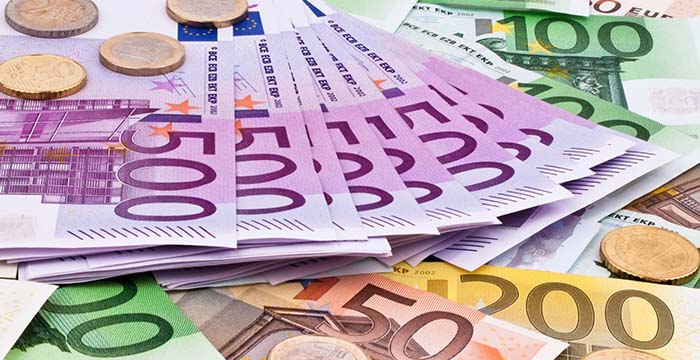The euro rose on Monday following the announcement of a framework trade agreement between the United States and the European Union, the latest in a series of agreements aimed at avoiding a global
trade war.
US President Donald Trump and European Commission President Ursula von der Leyen announced the agreement during their meeting in Scotland yesterday, which will result in a 15% tariff on EU goods, half the rate Trump had threatened to impose from 1 August.
Senior US and Chinese negotiators are scheduled to meet in Stockholm on Monday with the aim of extending the trade truce and preventing sharp increases in tariffs.
At the same time, investors’ attention is turning to corporate earnings and central bank meetings in the US and Japan.
“It could be a positive week, simply because we now know the rules of the game, so to speak,” said Rodrigo Catril, chief currency strategist at National Australia Bank.
He added in a National Australia Bank podcast, “With greater clarity, we can expect not only in the United States, but around the world, more willingness to look at investment opportunities, expansion and exploring opportunities.”
The euro was steady at $1.1763, up 0.2% so far in Asia. The single European currency rose 0.2% to 173.78 yen.
Trump said the European Union plans to invest about $600 billion in the United States and significantly increase its purchases of US energy and military equipment. This agreement is similar to one reached with Tokyo negotiators last week, which will see Japan invest around $550 billion in the United States and impose a 15% tariff on its cars and other imports.
Many in Europe still consider the basic 15% tariff to be too high, compared to Europe’s initial hopes for an agreement that would eliminate tariffs entirely.
China faces a deadline of 12 August to reach a permanent trade agreement with the United States. No progress is expected in the US-China talks in Stockholm, but analysts have predicted another 90-day extension of the trade truce that was agreed in mid-May.
The dollar rose on Friday, supported by strong economic data that suggested the Federal Reserve (the US central bank) may be slow to resume interest rate cuts. Both the Federal Reserve and the Bank of Japan are expected to keep interest rates unchanged at policy meetings this week, but traders are focusing on subsequent comments to assess the timing of the next steps.
The dollar remained unchanged at 147.68 yen. The dollar index, which measures the performance of the US currency against major currencies, fell 0.1% to 97.534.
The pound traded at $1.34385, down about 0.1%. The Australian dollar was at $0.6576, up 0.2%, while the New Zealand dollar was steady at $0.6019


